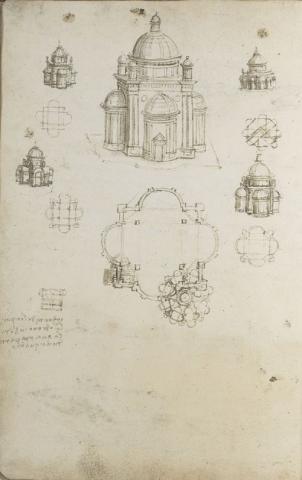Leonardo's Ideal City does not exist. It was never built. In the Manuscript B, there are hundreds of drawings and notes about the architectural elements of city. Leonardo moving around a busy city like Renaissance Milan, he took notes and made drawings of everything he found interesting or useful for becoming an architect. He also added his own thoughts and innovations. He had access to classical texts and those by Renaissance engineers that he studied and from which he drew inspiration.
With all these elements at his disposal, Leonardo was ready and capable of designing and building an entire city: an Ideal City. Everything had to work perfectly, especially the circulation of things and people, cleanliness and hygiene. Water is the energy of the Ideal city. The city's design starts with the choice of a suitable site with a river running through it. The river was diverted into 6-7 branches upstream of the city, all parallel to the mainstream and rejoining it downstream. He proposed three levels for the Ideal city.

The lowest level was a network of canals which was the primary circulation network. The canals would carry freight to and from the sea and also flush out the waste produced by the city. The natural movement of the river would be insufficient to these intended functions, so he proposed the damming of the river upstream of the city to create water torrents. The intermediate level would have roads for travellers and people for circulation. The upper level was intended for the gentry with palaces and gardens.
Every design is based on hygiene. Leonardo designed pipes and streets that are cleaned automatically using rain water. He designed machines that can raise water up to the higher floors continuously and with little manual effort. The water collected can be used for other purposes. If we wanted to see what the Ideal City might have looked like, we should look at the navigli or waterways of Milan as well as the architecture of Vigevano.
Unfortunately, Leonardo was busy with many other activities, including his work as a painter. He never would have had the time to manage such a complex building site.